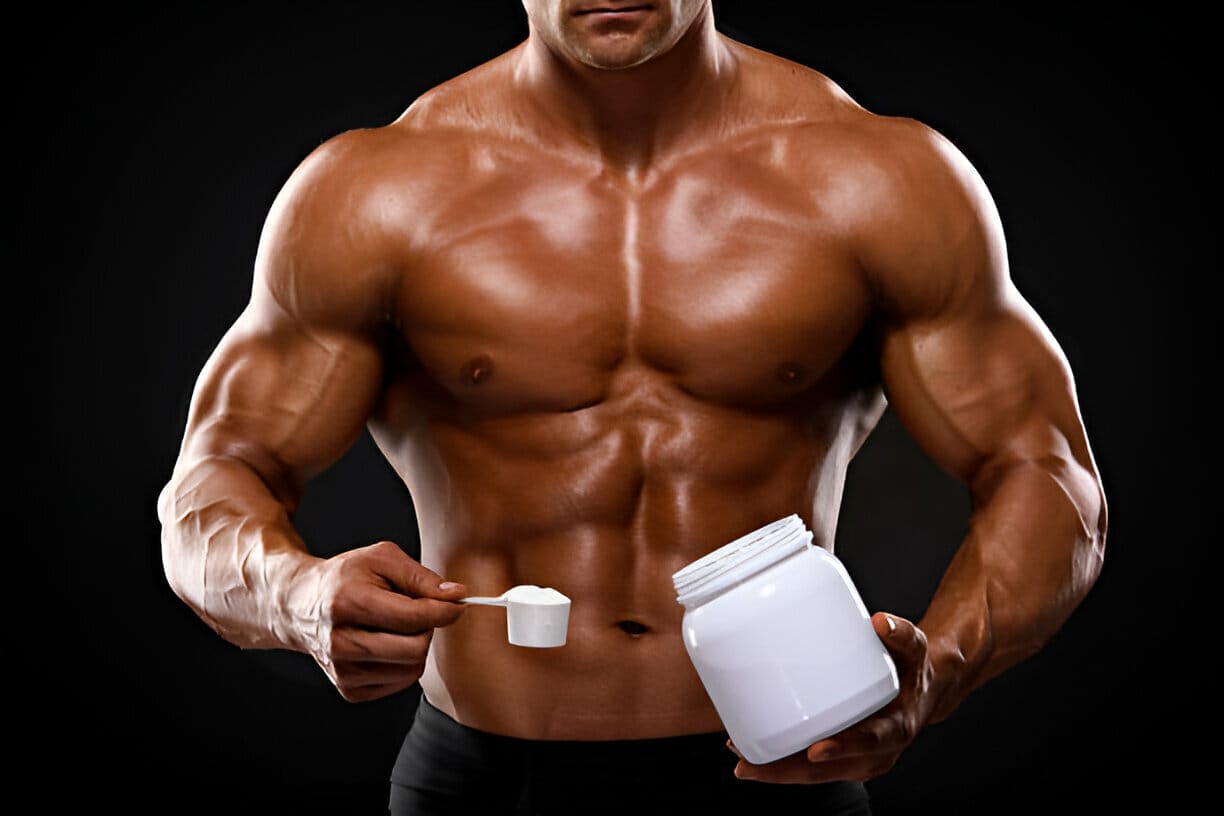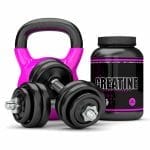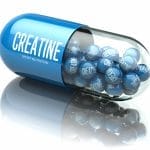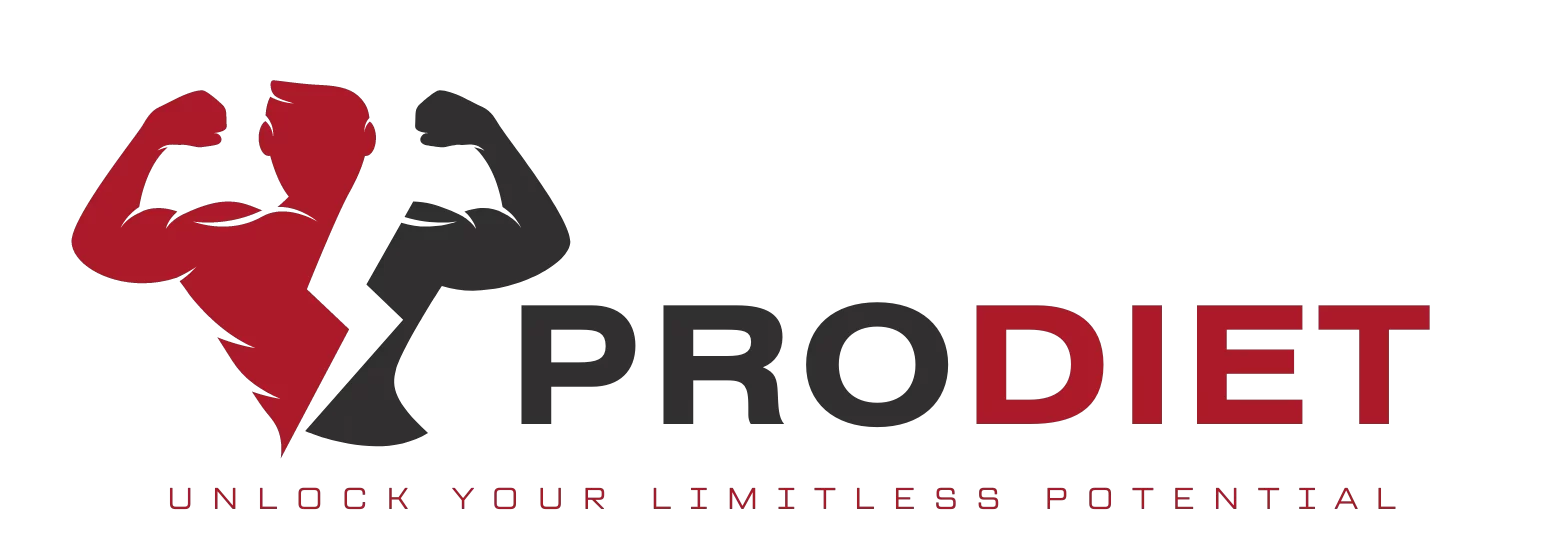Blog
What is Creatine? (How Does It Function in the Human Body?)

Creatine is a naturally occurring compound found in the body and certain animal-based foods, primarily red meat and fish. It’s stored in muscles and plays a vital role in the production of adenosine triphosphate (ATP) — the energy currency of your cells. During high-intensity physical activity, it helps regenerate ATP, enhancing performance, power, and endurance.
Due to its energy-boosting abilities, creatine monohydrate has become one of the most widely used and well-researched sports supplements worldwide. It’s not just for athletes anymore — it’s popular among fitness enthusiasts, bodybuilders, and even people looking to support brain health and aging muscles.
The Biochemistry of Creatine
The human body synthesizes it from three amino acids: arginine, glycine, and methionine. This process mainly occurs in the liver, kidneys, and pancreas. The body produces around 1–2 grams of creatine daily. However, people with high activity levels often require additional intake to meet their muscular energy demands.
Once produced or consumed, it is converted into phospho form of this and stored in muscle tissue. It helps rapidly regenerate ATP during intense activities like sprinting or heavy lifting.
Sources of Creatine
There are two main sources as:
1. Endogenous Production
Your body produces creatine internally, but this natural production is often not enough for individuals engaging in heavy workouts or with certain health conditions.
2. Dietary Intake
Foods such as red meat, pork, turkey, and fish are good dietary sources. For instance, 1 kg of raw meat or fish contains about 4–5 grams of it. However, cooking reduces its bioavailability. That’s why many people turn to creatine supplements for consistent intake.
Among the many forms of this, creatine monohydrate stands out as the most researched and cost-effective. It’s widely available in powder, capsule, or tablet form and is known for its proven efficacy in boosting strength and performance.
If you’re searching for a convenient option, creatine tablets offer an easy-to-use alternative to powders, especially for people who are always on the go.

How Does Creatine Work?
Creatine primarily acts by increasing phospho levels in muscles, helping regenerate ATP more rapidly. Here’s a breakdown:
-
Boosts Energy During Workouts: High levels of phospho allow for more explosive reps and sprints.
-
Delays Muscle Fatigue: Sustained ATP availability prevents early exhaustion.
- Enhances Cellular Hydration: It draws water into muscle cells, improving recovery and muscle volume.
Benefits of Creatine
1. Improved Athletic Performance
It improves strength, sprint performance, and workout volume. This makes it a favorite among athletes, sprinters, and bodybuilders.
2. Increased Muscle Mass
The most noticeable benefit is a gain in lean muscle mass, which comes from water retention, improved training performance, and possible increases in protein synthesis.
3. Faster Recovery
It has been shown to reduce muscle cell damage and inflammation, promoting quicker recovery between sessions.
4. Brain Health & Cognition
Emerging studies suggest it enhances memory, reaction time, and brain function, especially under stress or sleep deprivation.
5. Helpful in Medical Conditions
Some studies show benefits for neurodegenerative diseases (like Parkinson’s), depression, and age-related muscle loss.
If you’re curious about affordability, the creatine price in Pakistan varies widely depending on brand and form — powders are often more economical than tablets or blends.

Who Should Use Creatine?
1. Athletes & Gym-Goers
Whether you’re a powerlifter or a runner, it helps deliver those extra reps, lifts, and bursts of power.
2. Older Adults
Age-related muscle loss (sarcopenia) can be slowed with it, making it a great supplement for those over 50.
Vegans & Vegetarians
Since plant-based diets lack natural sources of creatine, supplementation is crucial for achieving adequate levels.
4. Women
creatine for women is equally effective! Many women benefit from increased energy, muscle tone, and mental sharpness — without bulking up excessively.
Supplementation Guidelines
Loading Phase (Optional)
-
20g per day (split into 4 servings) for 5–7 days
Maintenance Phase
- 3–5g per day after the loading phase
Best Time to Take Creatine
Post-workout is ideal, especially when taken with carbs or protein.
Consistency is more important than timing. You can mix it in water, smoothies, or even creatine shakes designed to aid muscle gain.
Types of Creatine
While monohydrate is king, other forms include:
- Creatine HCL
- Buffered Creatine (Kre-Alkalyn)
Still, none surpass the effectiveness and affordability of creatine monohydrate.
Creatine Side Effects: Fact vs Myth
Creatine is not a steroid. It’s safe for long-term use in healthy individuals, but misuse or excessive intake may cause mild side effects.
Common Side Effects:
-
Water retention
-
Bloating or mild stomach discomfort
-
Muscle cramping (rare)
-
Increased urination
These are typically short-term and can be minimized with proper hydration and dose spacing.
For transparency, people with kidney issues should consult a healthcare provider before using It.
If you’re wondering about safety or potential risks, check updated research before assuming the worst. Many fears around creatine side effects are exaggerated or misinformed.
Creatine Myths & Misconceptions
-
-
-
❌ Myth: It causes hair loss
✅ Truth: No strong scientific evidence backs this claim. -
❌ Myth: It damages kidneys
✅ Truth: In healthy individuals, it shows no adverse effects on kidney function even with long-term use. -
❌ Myth: It causes dehydration
✅ Truth: It may increase water retention in muscles, but it does not dehydrate the body if fluid intake is maintained.
-
-
Gold Creatine – Premium Blend
Gold creatine is a premium formula that may combine monohydrate with electrolytes or other performance-boosting compounds. It’s known for enhanced absorption and fewer side effects like bloating. If you’re looking for elite performance
Who Can Consume Creatine?
-
-
- Athletes and Fitness Enthusiasts: Creatine is beneficial for those activities that are short and explosive or those related to weight lifting.
- Older Adults: This supplements can reverse aging muscle loss and enhance muscle strength and physical performance in the elderly.
- Vegetarians and Vegans: Because a plant based diet does not contain pure form it is useful to supplement vegetarians and vegans to obtain similar serum creatine levels to their non-vegetarian counterparts.
- Individuals with Neurological or Muscular Disorders: As discussed earlier it can be useful for treating some diseases, and here are those diseases:
-
Possible Uses Aside from Sports
The positive effects of Creatine are not only limited to the muscles of athletes and their performance but have various advantages to behold. It may also play a role in:
-
-
- Reducing mortality and morbidity by improving muscle strength and thereby the ability of the seniors to avoid falls and fractures.
- Enhancing metabolic health relating to glucose ledger and insulin sensitivity.
- Help
- ing those with TBI or concussion, to help get back on their feet more independently.
-

Conclusion: Should You Use this?
It is safe, effective, affordable, and versatile. Whether you’re a bodybuilder looking to gain mass, an athlete aiming to improve performance, or someone focused on aging gracefully — creatine is a smart, evidence-backed choice.
It’s time-tested, well-researched, and used by millions globally with consistent results. For best results, stick with monohydrate and maintain your hydration and dosage.
Ready to upgrade your workouts and overall strength?
Explore top-quality at ProDiet Pakistan now.
